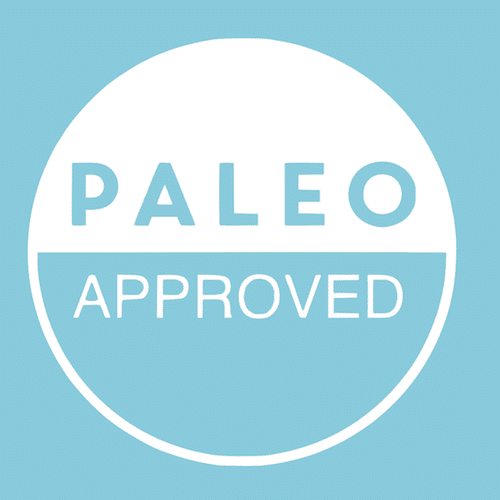Mercury’s neurotoxicity has prompted close scrutiny of fish oil supplements, yet contemporary purification techniques may mitigate risk. This review synthesises 2019 – 2024 evidence on total‑mercury concentrations, regulatory limits, testing methodologies and enforcement actions for fish, cod‑liver, krill and concentrated omega‑3 oils sold in the United States, Canada, the European Union and Japan, with reference to WHO guidance. Across >2 000 commercial samples, mercury was typically undetectable or ≤0.01 mg kg⁻¹—well below the 0.10 mg kg⁻¹ limit applied in the EU and adopted industry‑wide. No region recorded a mercury‑driven recall. Rigorous third‑party heavy‑metal testing therefore remains pivotal to consumer protection and brand credibility.
Methodology
A narrative literature review was undertaken covering January 2019 through December 2024. Searches of PubMed, ScienceDirect and regulatory repositories (FDA, Health Canada, EFSA, MHLW, Codex/WHO) retrieved analytical surveys, surveillance reports, voluntary monographs and recall databases relevant to mercury in fish‑derived supplements. All formulation types (triglyceride, ethyl‑ester, re‑esterified triglyceride) were eligible. Key variables extracted were mercury concentration, detection limits, compliance with statutory or voluntary thresholds, analytical technique (e.g., CV‑AAS, CV‑ICP‑MS) and any ensuing enforcement action. Findings were synthesised qualitatively by jurisdiction.
Mercury, fish‑oil supplements, omega‑3 fatty acids, heavy‑metal testing, regulatory compliance, public health, ICP‑MS, quality assurance
Fish oil supplements deliver the cardioprotective and anti‑inflammatory benefits of eicosapentaenoic and docosahexaenoic acids without the high methyl‑mercury burden associated with certain seafood species. Nevertheless, because mercury biomagnifies in marine food webs, regulators and consumers continue to question whether finished oils remain truly contaminant‑free. Historically, molecular distillation and carbon filtration have removed metallic impurities efficiently, and many brands market products as “mercury‑free,” albeit absent a formal legal definition. Assessing contemporary evidence is essential for confirming that purification, analytical verification and regulatory oversight together maintain mercury at toxicologically insignificant levels.
Analytical studies from the United States consistently reported mercury either below instrument detection limits (≤6 µg L⁻¹) or at trace levels ≤12 µg L⁻¹, equating to <0.01 mg kg⁻¹ in finished capsules—orders of magnitude beneath the FDA’s 1 mg kg⁻¹ action level for fish tissue and far below California Proposition 65’s 0.3 µg day⁻¹ exposure trigger. European investigations corroborated these findings; a 23‑product survey spanning cod‑liver, shark‑liver and vegetable oils recorded a mean mercury content of 0.165 µg kg⁻¹ and a maximum of 0.427 µg kg⁻¹, i.e., <0.5 % of the EU’s 0.10 mg kg⁻¹ limit. Industry databases (e.g., GOED 1 894‑sample audit) showed 100 % compliance with the ≤0.10 mg kg⁻¹ monograph specification. No mercury‑related recalls were issued by the FDA, Health Canada, the EU Rapid Alert System or Japan’s MHLW during the review window, underscoring effective quality assurance and regulatory vigilance.
The convergence of stringent statutory limits, voluntary standards and increasingly sensitive instrumentation (sub‑ppb detection via CV‑ICP‑MS or direct mercury analysers) has rendered mercury contamination in fish‑oil supplements a managed rather than emerging risk. Importantly, routine third‑party heavy‑metal certification not only verifies compliance but also differentiates responsible manufacturers in a competitive marketplace. Continuing such testing is imperative: environmental mercury fluxes, supply‑chain shifts or lapses in good manufacturing practice could reintroduce risk. Harmonising explicit numerical limits across jurisdictions—mirroring the EU’s 0.10 mg kg⁻¹ threshold—would further simplify compliance and prevent regulatory arbitrage.
Conclusion
Between 2019 and 2024, fish‑oil supplements marketed in North America, Europe and Japan consistently contained mercury concentrations well below health‑based limits; none approached levels necessitating recall. This success reflects deliberate raw‑material selection, advanced purification and mandatory or voluntary heavy‑metal testing—practices that should be maintained and publicised to preserve consumer confidence. The heavy‑metal certification sector thus plays a central role in safeguarding public health while supporting brands committed to demonstrable purity.
Brodziak‑Dopierała, B., Fischer, A., & Ahnert, B. (2023). Mercury exposure from the consumption of dietary supplements containing vegetable, cod‑liver, and shark‑liver oils. International Journal of Environmental Research and Public Health, 20(3), 2129. https://doi.org/10.3390/ijerph20032129
Foran, S. E., Flood, J. G., & Lewandrowski, K. B. (2003). Measurement of mercury levels in concentrated over‑the‑counter fish‑oil preparations: Is fish oil healthier than fish? Archives of Pathology & Laboratory Medicine, 127(12), 1603 – 1605. https://doi.org/10.5858/2003‑127‑1603‑MOMLIC
Global Organization for EPA and DHA Omega‑3s. (2022). GOED voluntary monograph (Version 8.1). https://goedomega3.com
U.S. Food and Drug Administration. (2000). Action level for methylmercury in fish (Compliance Policy Guide § 540.600). https://www.fda.gov
European Commission. (2008). Commission Regulation (EC) No 629/2008 amending Regulation (EC) No 1881/2006 setting maximum levels for certain contaminants in foodstuffs. Official Journal of the European Union, L 173, 6 – 9.
Health Canada. (2021). Mercury and human health. https://www.canada.ca/en/health‑canada
Garcia, V. L., Pappis, C. C., & Viana, A. (2024). Mercury extraction from multivitamin mixtures followed by determination using FI‑CV‑ICP‑MS. Journal of the Brazilian Chemical Society, 35(6), e20230187. https://doi.org/10.21577/0103‑5053.20230187
This work is licensed under a Creative Commons Attribution 4.0 International License.
 Cadmium Exposure in Protein Powders: Risk Assessment and Remediation
Cadmium Exposure in Protein Powders: Risk Assessment and Remediation
 Lead Contamination in Children's Vitamins: A Critical Safety Review
Lead Contamination in Children's Vitamins: A Critical Safety Review